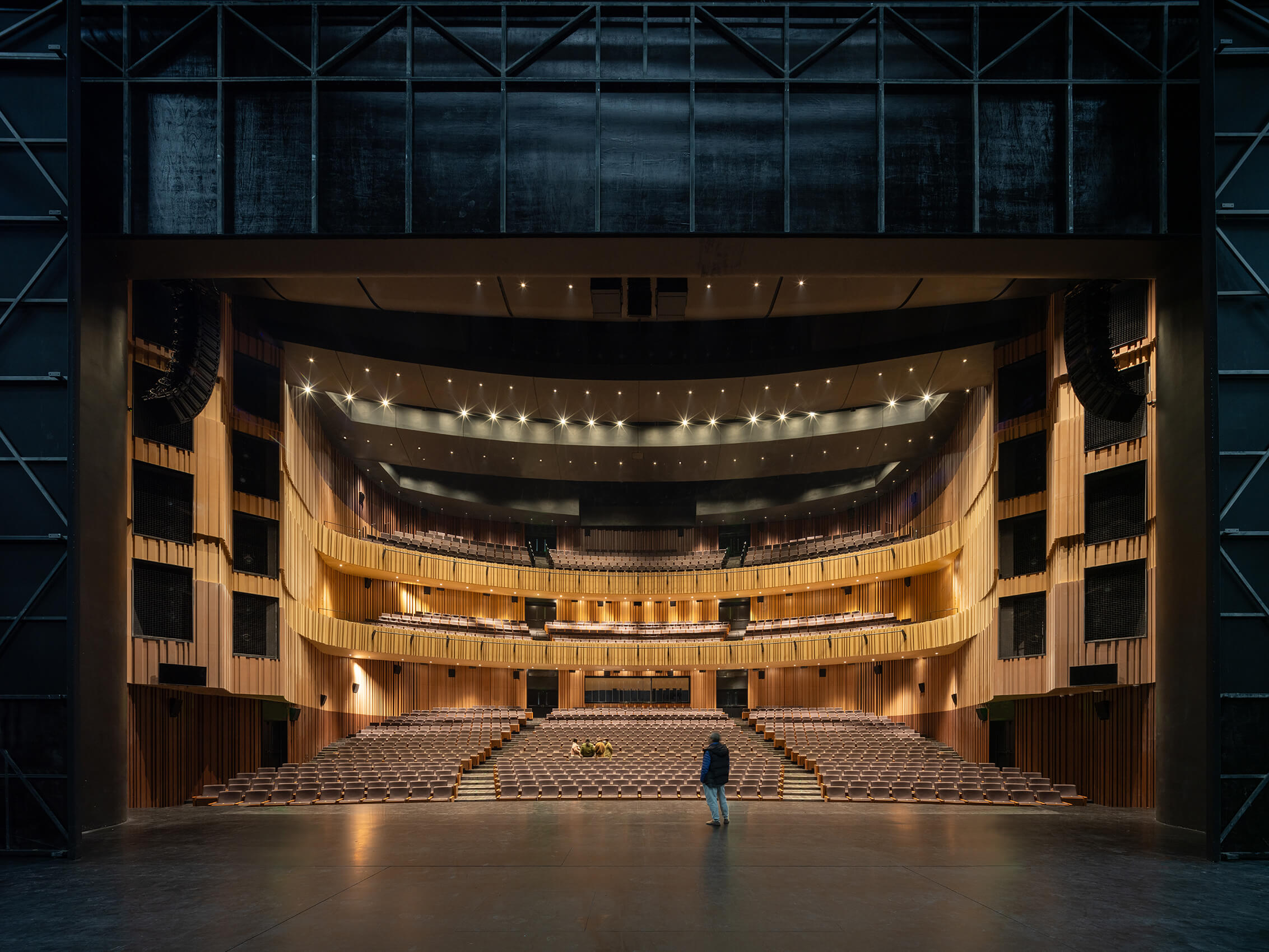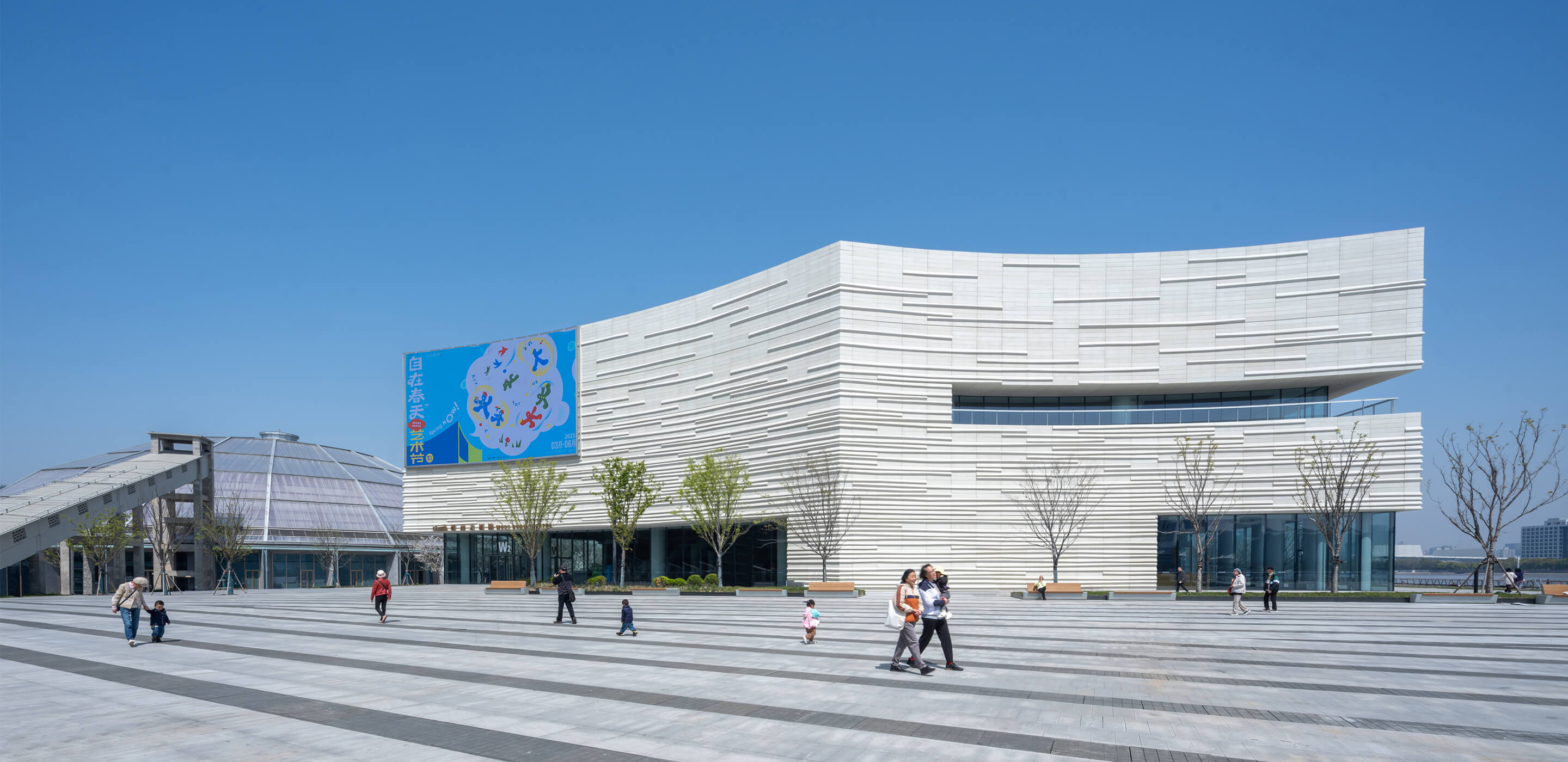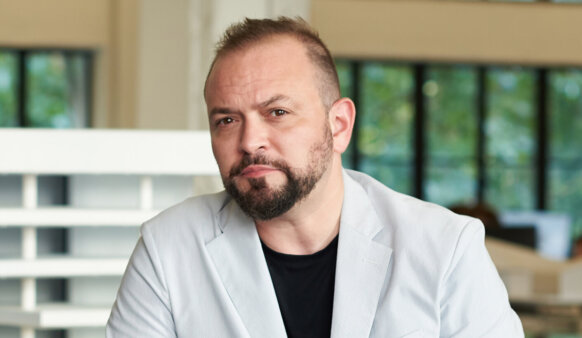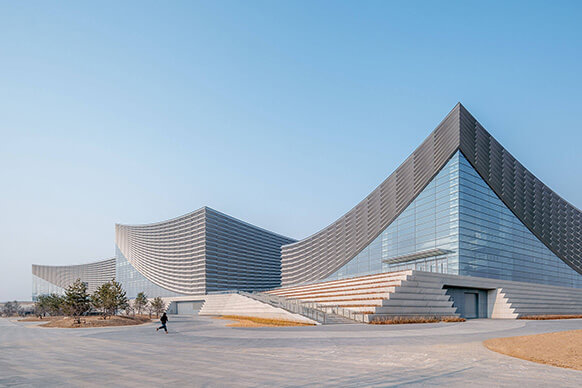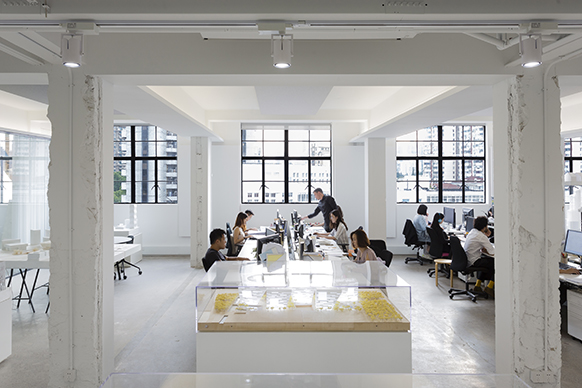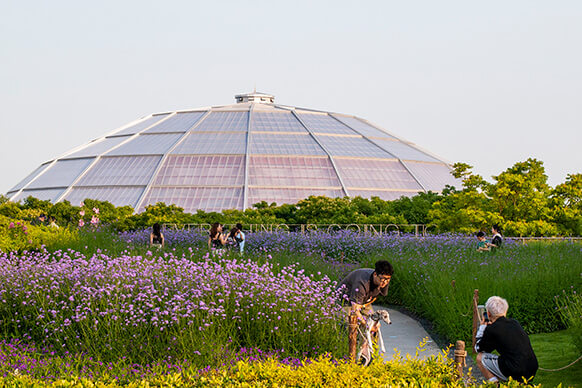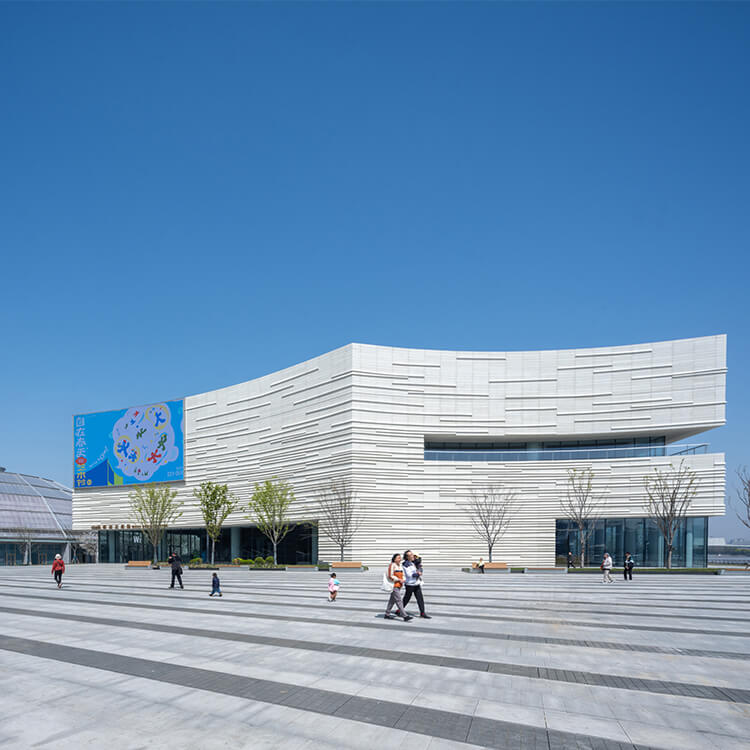
West Bund Grand Theatre
Located along the Huangpu River in Shanghai, the West Bund Grand Theatre marks a new cultural landmark in the city’s West Bund district. The venue comprises a main auditorium with 1,600 seats and a more intimate black box theatre with 200 seats designed for experimental performances. In addition to world-class productions, the theatre offers children’s dance and music classes, as well as a publicly accessible café and restaurant—creating a vibrant space for both local and international communities. Generous outdoor areas further activate the riverfront, encouraging public engagement and leisure.
The West Bund is the most rapidly developing arts, culture, and commercial district in Shanghai. Located along the banks of the Huangpu River just south of the center city, it represents a concerted effort by the Shanghai Municipal Government to create an iconic world-class urban waterfront comparable to the Paris Rive Gauche and London South Bank.
Formerly an industrial zone built out during the early 20th century, the current development is guided by a master plan that combines existing structures and new buildings with a pedestrian-oriented landscape that encourages a lively, bustling atmosphere. When completed, the 9.4-square-kilometer West Bund will be the largest cultural district in Asia.
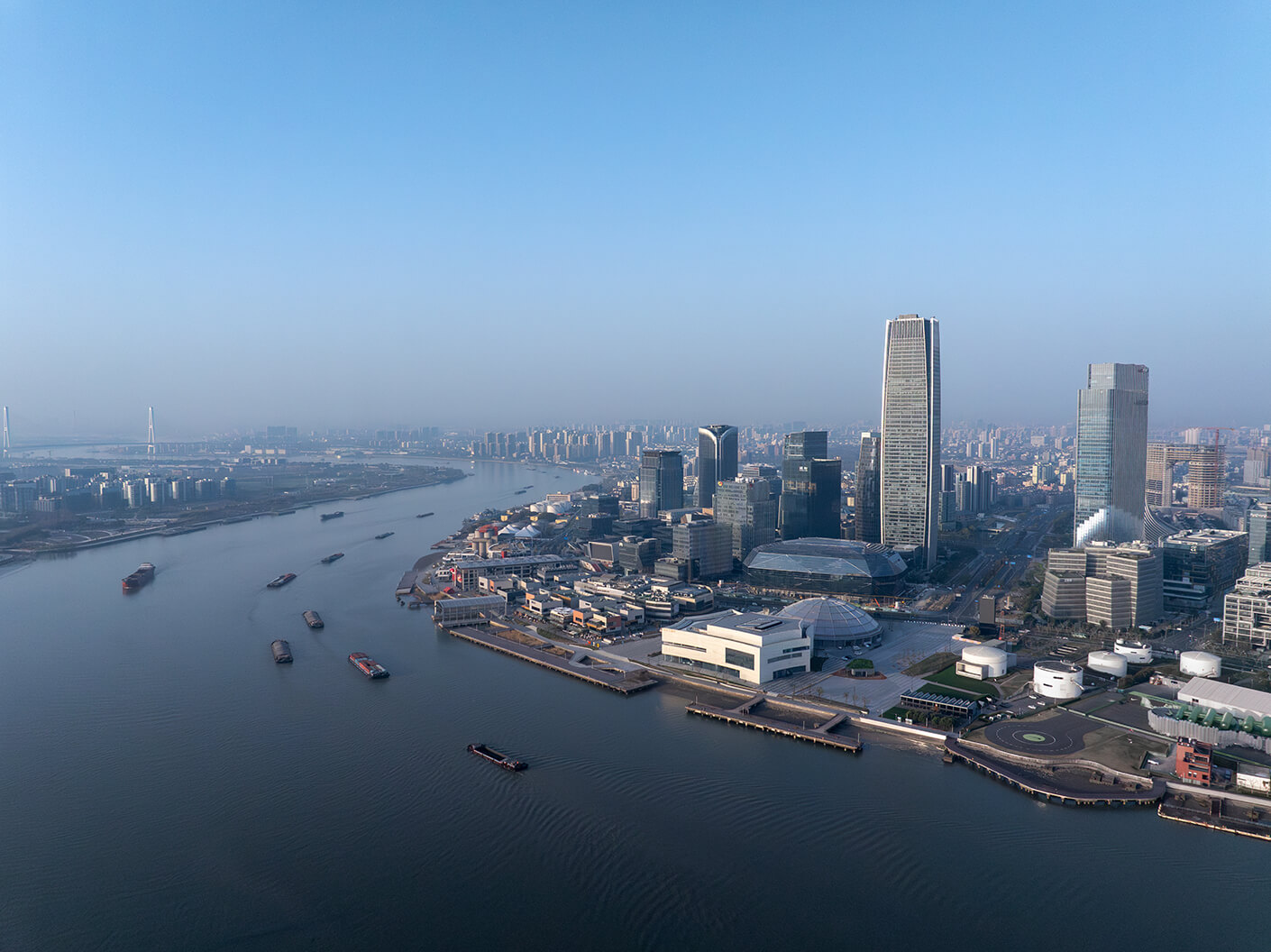
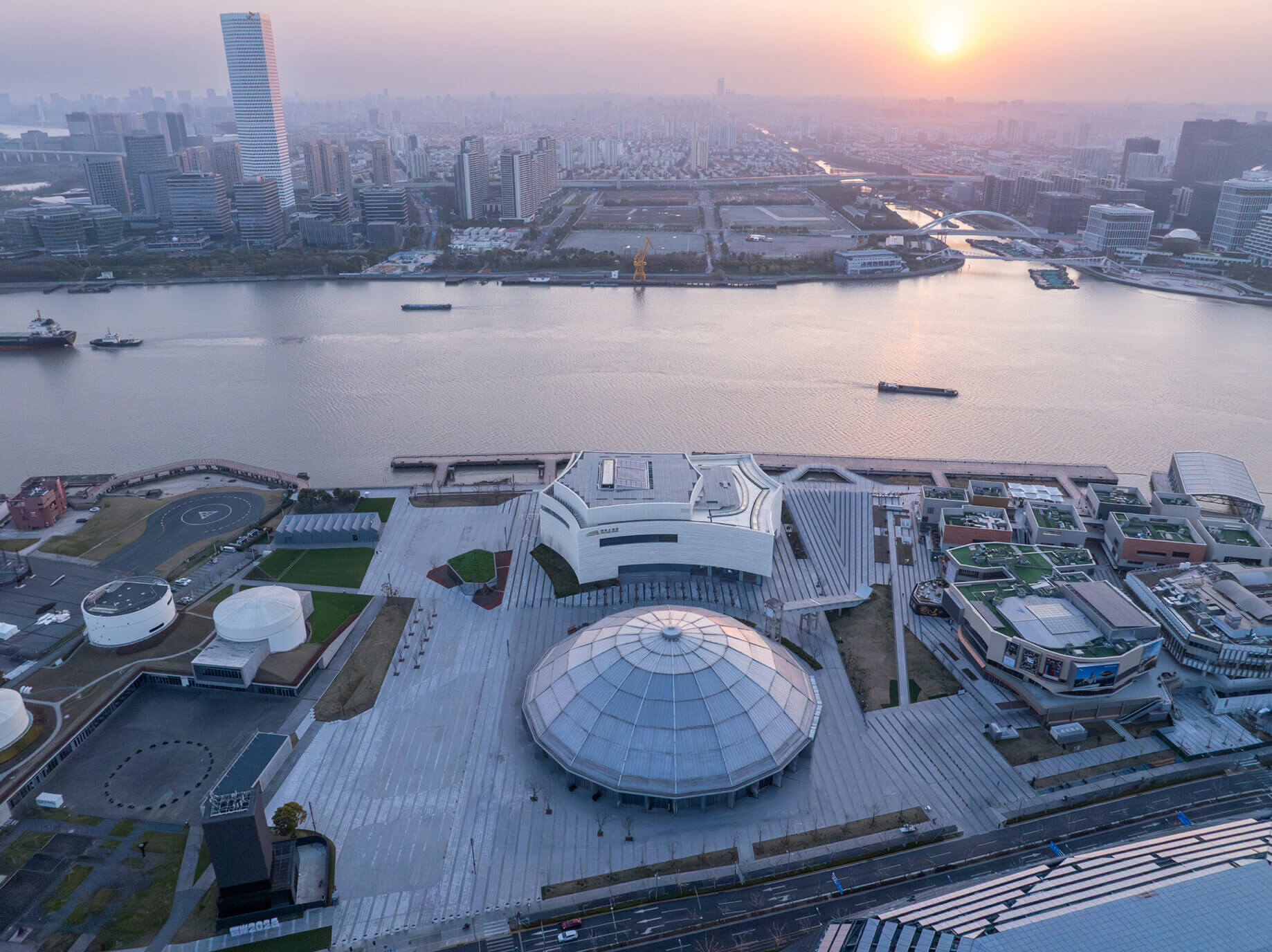
The new theatre is conceived as one half of a yin yang partnership with the newly opened West Bund Dome, a renovated and adaptively reused historic structure adjacent to the theatre. The dome is translucent, exuding light in the evenings, while the theatre is monolithic and abstract. The dome was once a pre-homogenization facility for China’s largest cement production plant; the theatre celebrates this heritage as a new concrete mass.
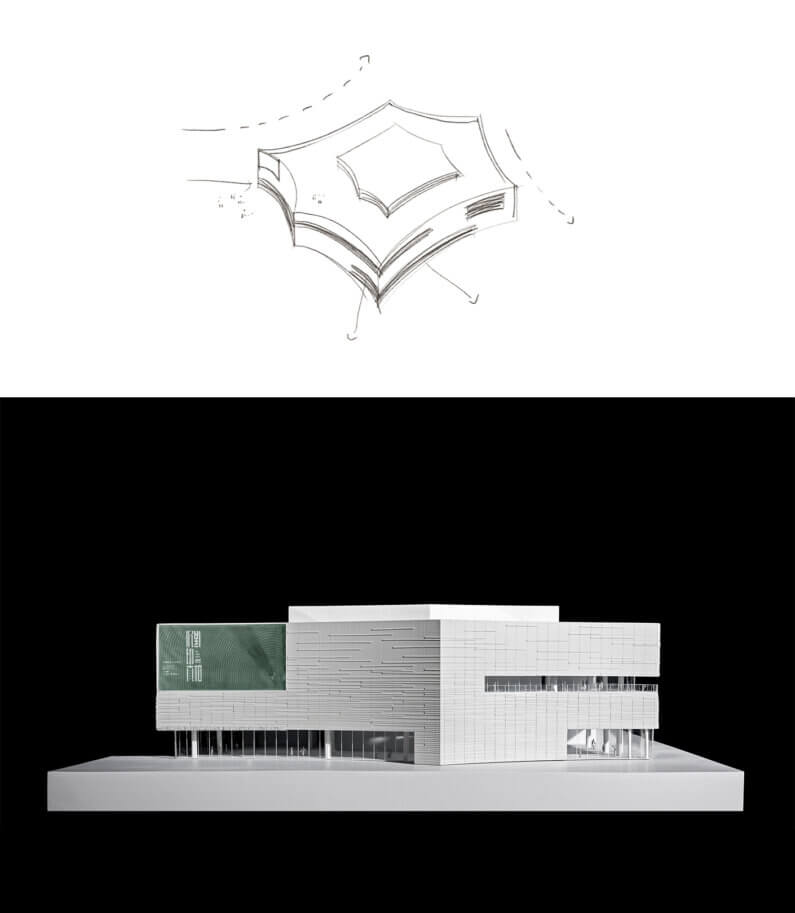
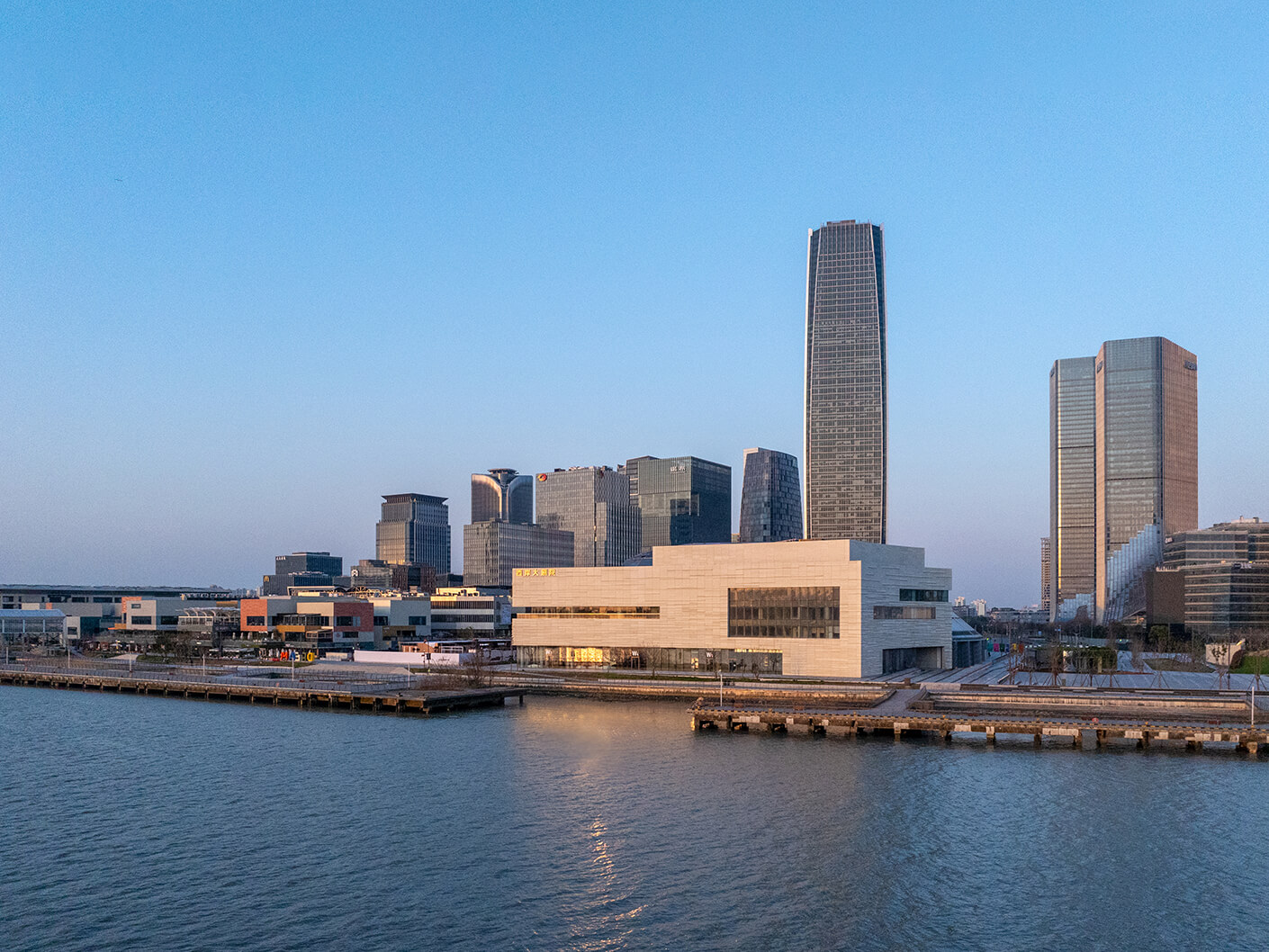
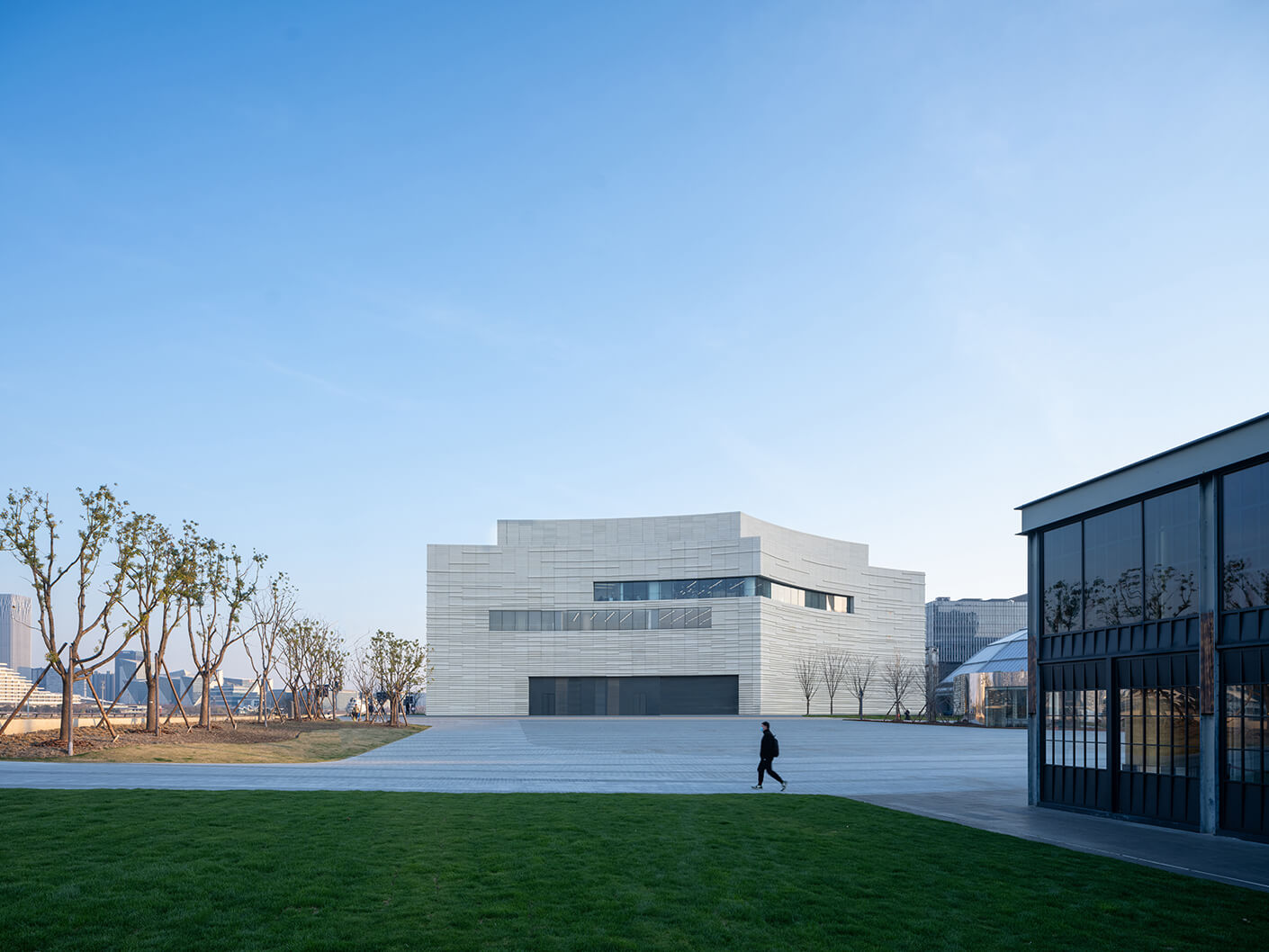
The West Bund Grand Theatre is one of the district’s key cultural venues. From the outset, it was conceived as a truly public destination, welcoming both theatre-goers and those simply passing through the area. As such, the theatre invites a broad audience — including local residents, dog walkers and tourists — to enjoy its unique location and public amenities.
A large outdoor plaza emphasises the public nature of the project, while generous terraces—one on the roof, and another halfway up the elevation—provide perches for theatregoers to enjoy a moment outside between acts.
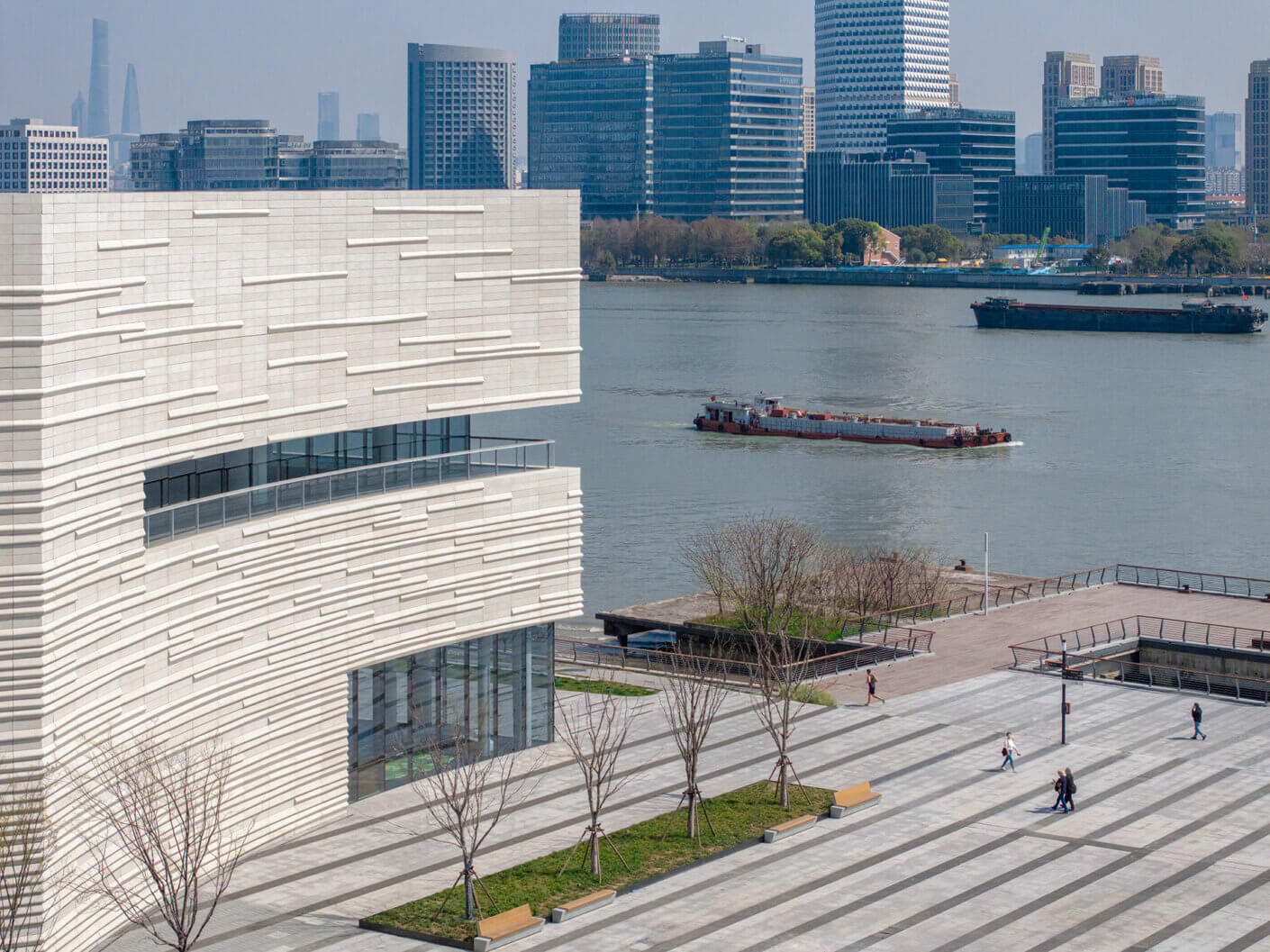
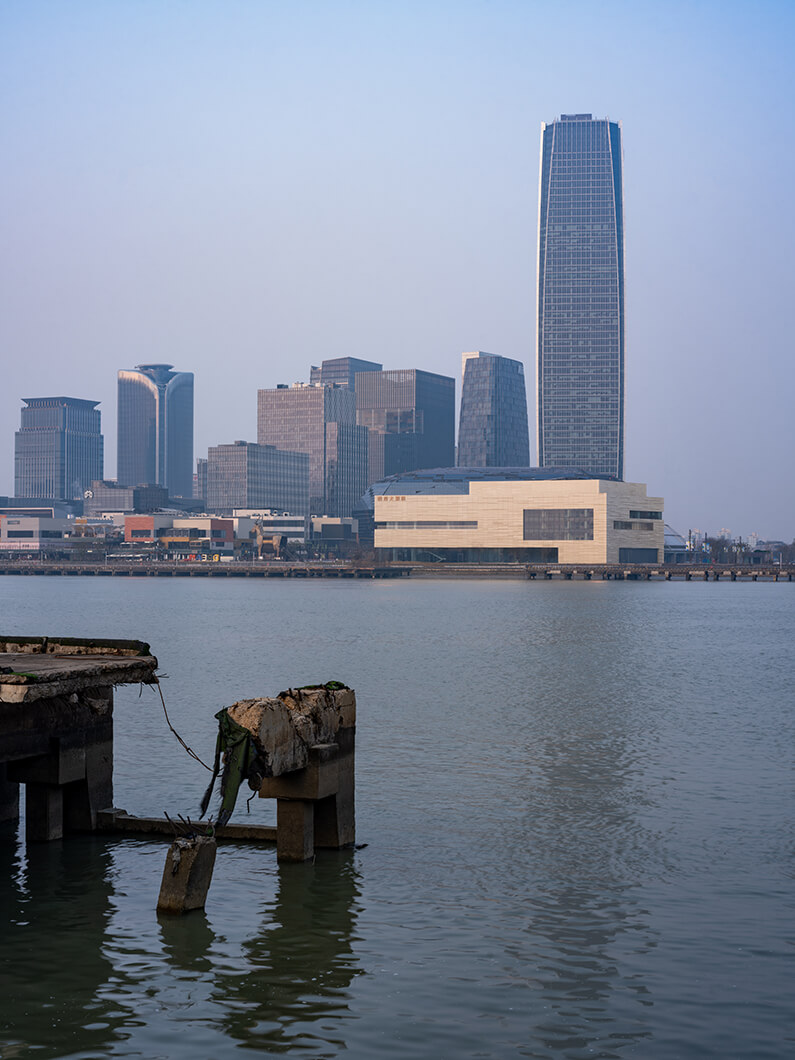
“The Huang Pu River is so important for Shanghai, so, having a location right on the riverfront is extremely privileged. From there, you become acutely aware of how busy the river is. It is never still, always moving, slowly carrying boats that are of a similar scale to the Grand Theatre building. When you walk toward the river, the image of the water is powerful. We wanted the West Bund Grand Theatre to represent this.”
― Chris Hardie, Principal, Design Director

Clad in warm, earthen-hued ceramic tiles, the lobby offers a serene counterpoint to the building’s austere exterior. Skylights, rhythmically placed, usher in daylight that drifts through the space — catching on curved balconies, lingering in quiet alcoves, and animating each architectural fold with a gentle luminance.
On the ground floor level, floor-to-ceiling windows dissolve the boundary between interior and exterior, allowing the lobby to converse fluently with the world beyond — an interplay of space, light, and reflection that feels both deliberate and quietly subtle.
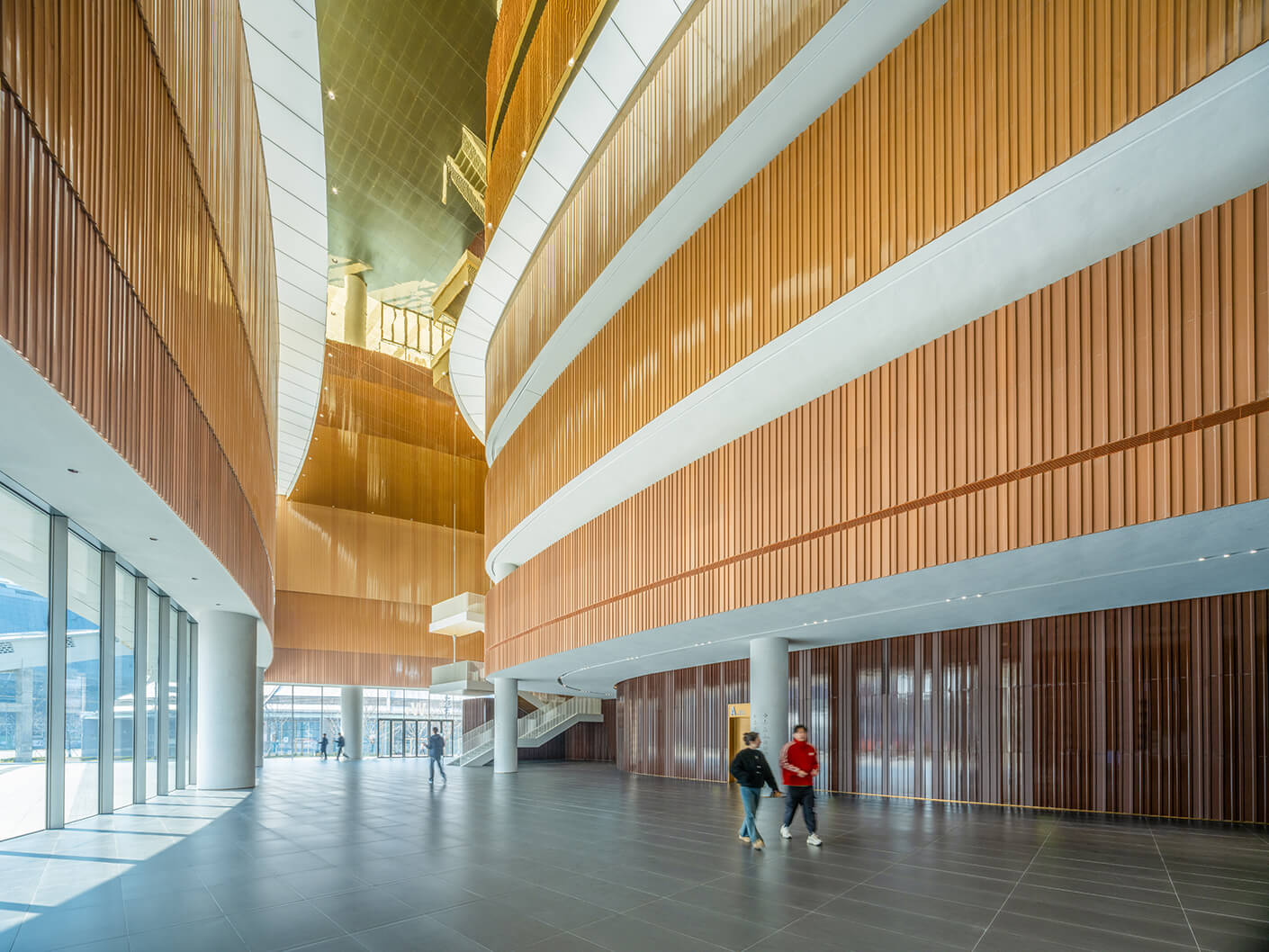
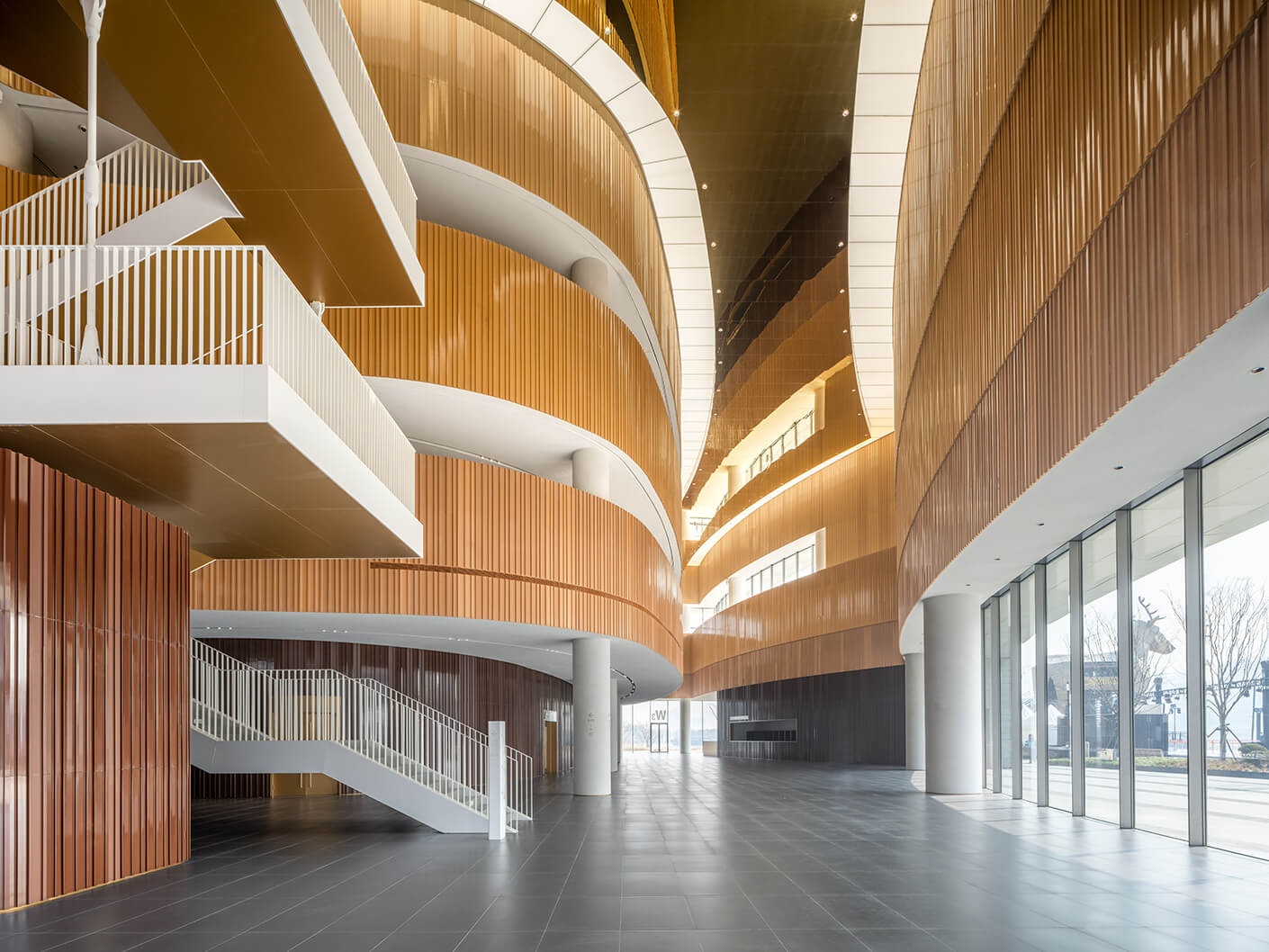
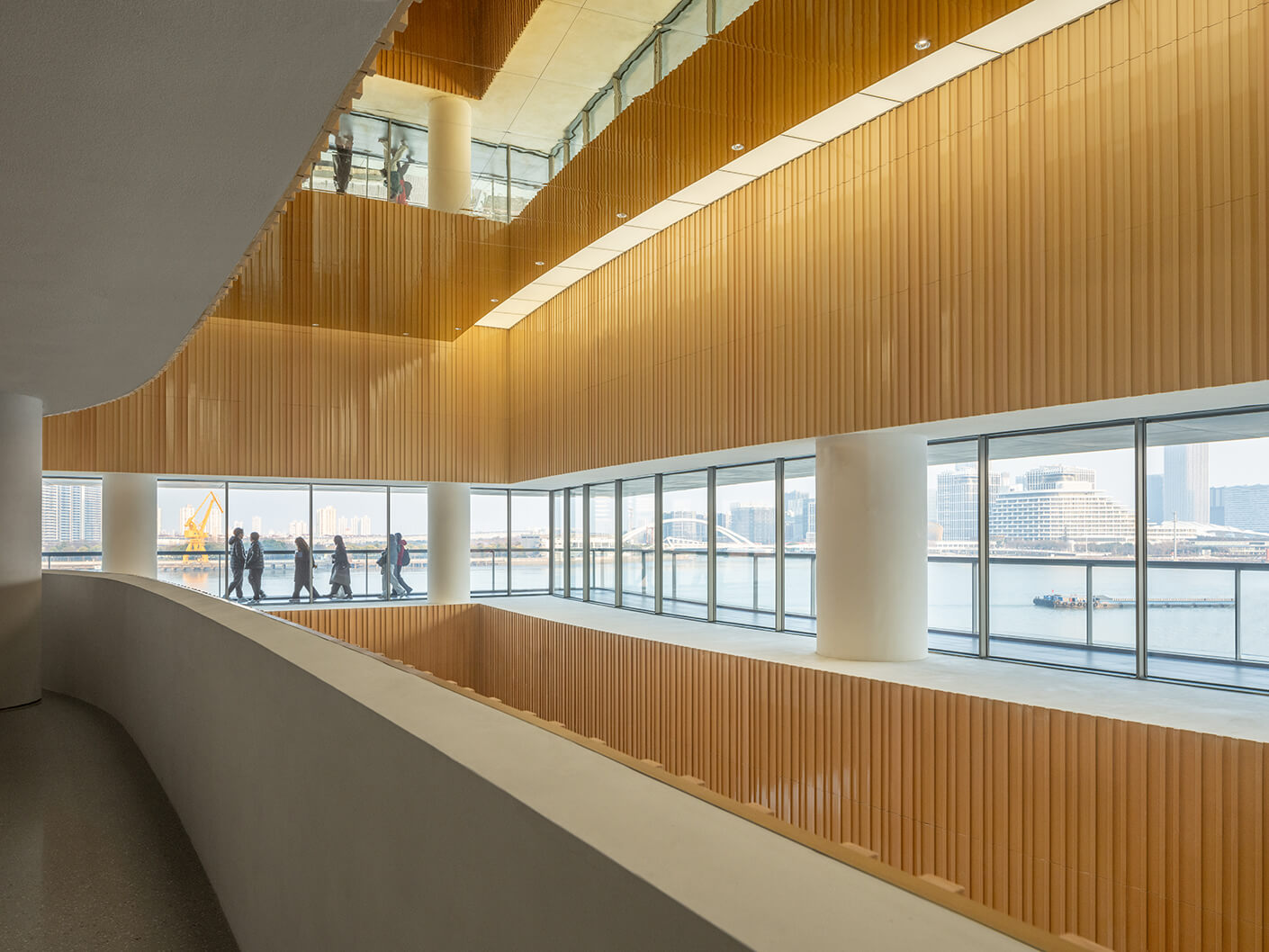
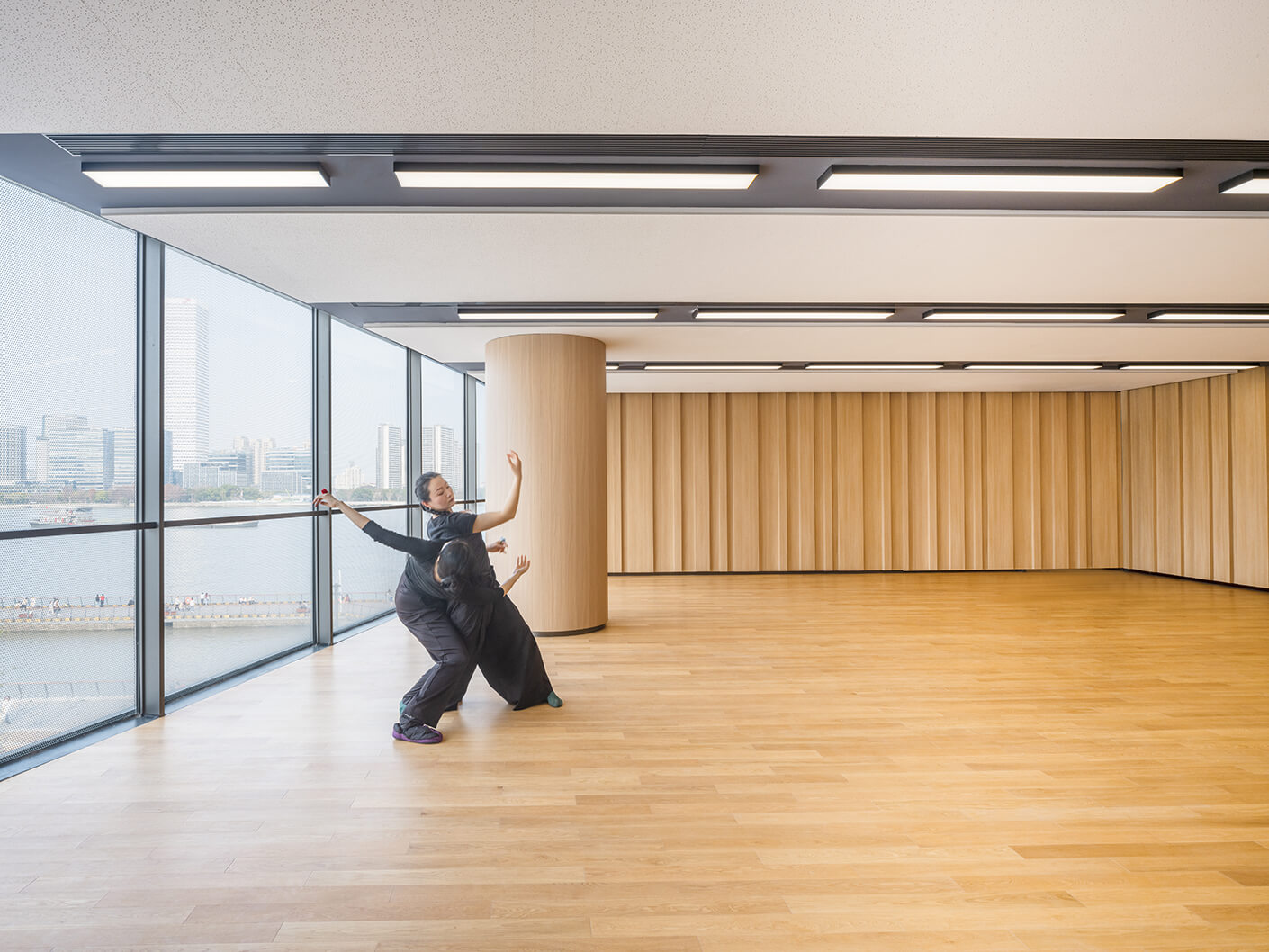
Throughout the interior public spaces, expansive windows offer views across the river and toward the rest of the West Bund district. Generous terraces—one on the roof, and another halfway up the elevation—provide perches for theatre goers to enjoy a moment outside between acts.
